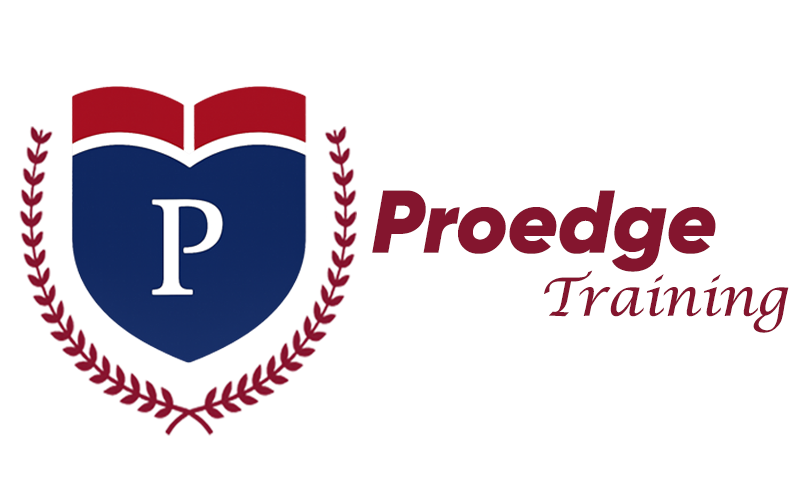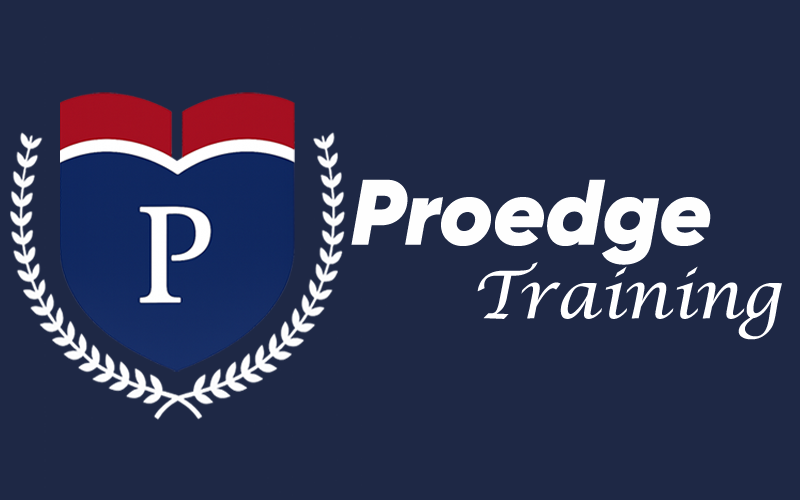
How To Become A Painting Contractor: Step-by-Step Guide
To become a painting contractor, follow a few key steps. Start by gaining skills in painting and business management.
Then, obtain the necessary licenses and certifications. Painting contractors are in demand. Many homeowners and businesses seek professionals to handle their painting needs. This career combines artistry with business acumen, offering opportunities to showcase creativity while running a successful enterprise.
As a painting contractor, you manage projects, coordinate with clients, and ensure quality work. Understanding the basics of painting and project management is essential. This guide will cover the steps needed to enter this rewarding field. Whether you’re passionate about painting or looking to start a new career, becoming a painting contractor can be a fulfilling path.

Essential Skills
Becoming a painting contractor is a promising career path. It combines creativity with technical prowess. To succeed, you need a set of essential skills. These skills ensure you deliver quality work and manage your business effectively. Understanding these skills can be your stepping stone to a successful painting business.
Technical Skills
Technical skills are fundamental. They help you deliver excellent painting services. Mastering painting techniques is crucial. You must know how to apply various types of paint. Different surfaces require different approaches. Understanding the use of painting tools is also important. Brushes, rollers, and sprayers each have specific uses. Using the right tool for the job ensures a quality finish. Keep your tools in good condition. It impacts the quality of your work. Consider safety. Comply with safety regulations to protect yourself and your clients. Know how to handle and dispose of chemicals safely. Safety regulations vary by region. Keep updated on local laws to stay compliant.
| Technical Skill | Importance |
|---|---|
| Painting Techniques | Ensures quality finish |
| Painting Tools | Enhances efficiency and quality |
| Safety Regulations | Prevents accidents and legal issues |
Business Skills
Running a painting business requires business acumen. Client communication is key. You must understand client needs and expectations. Clear communication builds trust and ensures satisfaction. Project management is another critical skill. You need to manage time and resources efficiently. This includes planning and executing projects on time. Good project management prevents delays and cost overruns. Effective marketing strategies are essential to attract clients. Use online and offline methods to reach potential customers. Social media, flyers, and word-of-mouth are valuable tools. Understanding cost estimation and job bidding is crucial. You need to provide accurate quotes to win projects. Keep your prices competitive yet profitable. Consider obtaining a contractor certification. It can enhance your credibility. Certifications show you meet industry standards.
- Client Communication – Builds trust and ensures project alignment
- Project Management – Ensures timely and efficient project execution
- Marketing Strategies – Attracts potential clients and builds brand presence
- Cost Estimation and Job Bidding – Crucial for profitability and winning projects
- Contractor Certification – Enhances credibility and trust

Training Pathways
Becoming a painting contractor requires knowledge, skill, and experience. Training pathways are essential to develop these attributes. Proper training helps you learn painting techniques, trade skills, and business marketing. It also involves understanding project management and acquiring a contractor license. Below, we explore two main training pathways: Formal Education and Apprenticeships.
Formal Education
Formal education provides a structured learning environment. Many community colleges and trade schools offer relevant courses. These programs cover essential topics, such as painting techniques and trade skills. They also include business marketing and project management. Key areas of study often include:
- Painting Techniques
- Trade Skills
- Business Marketing
- Project Management
- Safety Regulations
A formal education helps in earning industry certifications. These certifications are valuable for credibility and trust in the painting business. Consider this table for a quick overview of potential courses:
| Course | Duration | Outcome |
|---|---|---|
| Basic Painting Techniques | 6 weeks | Certificate |
| Business Marketing | 8 weeks | Diploma |
| Project Management | 10 weeks | Diploma |
Understanding cost estimation and safety regulations is also vital. These subjects ensure that you can run a safe and profitable painting business.
Apprenticeships
Apprenticeships offer hands-on experience. This pathway is practical for learning painting techniques and trade skills. Working under a skilled painter helps you gain real-world insights. Apprenticeships typically involve:
- On-the-job Training
- Mentorship from Experienced Painters
- Learning Customer Service
During an apprenticeship, you learn to estimate costs and manage projects. These skills are crucial for obtaining a contractor license. The experience also prepares you for industry certifications. Many apprenticeships last between one to four years. The duration depends on the complexity of skills you wish to acquire. This timeline allows you to build a strong foundation in the painting business. Overall, apprenticeships provide valuable experience. They help you understand the nuances of customer service and project management.
Licensing Requirements
Becoming a painting contractor can be a rewarding career path. It offers opportunities to enhance homes and businesses with your skills. However, before you start offering your painting services, understanding the licensing requirements is crucial. Proper licensing ensures that you operate legally and are recognized as a professional in the industry. It also builds trust with clients, helping you establish strong customer relationships. In this section, we will delve into the necessary steps to obtain a contractor license, including state regulations and local permits.
State Regulations
Every state has its own set of contractor regulations. These dictate what you need to legally perform painting services. To get started, research the specific requirements for your state. You may need to pass a licensing exam, which tests your knowledge of painting techniques and project management. Below are common steps involved:
- Painting Certification: Some states require proof of painting certification to ensure you are qualified.
- Contractor License: A contractor license is often needed to offer home improvement services legally.
- Business Insurance: Many states mandate liability insurance to protect against potential damages.
- Estimating Costs: You may need to demonstrate your ability to estimate costs accurately for painting projects.
Some states might also have additional requirements, such as background checks or financial statements. It’s vital to stay updated on any changes to these regulations. The table below outlines common requirements for different states:
| State | License Exam | Insurance | Certification |
|---|---|---|---|
| California | Required | Mandatory | Optional |
| Texas | Optional | Mandatory | Required |
| Florida | Required | Optional | Required |
Local Permits
In addition to state regulations, local permits are crucial for your painting business. These permits ensure compliance with city or county rules. Here’s what you need to consider:
- Home Improvement: Some areas require permits for home improvement projects, including painting.
- Project Management: Efficient project management can help in acquiring necessary local permits on time.
- Contractor Regulations: Local regulations may have specific requirements distinct from state rules.
To obtain permits, visit your local government office or website. You may find forms online or instructions on how to apply. It’s important to communicate clearly with officials and ask questions if you’re unsure. Make sure you understand all fees involved. Completing these steps ensures you avoid fines or legal issues. Below is an ordered list of steps to follow:
- Research local permit requirements for painting services.
- Prepare necessary documents, including your contractor license and insurance proof.
- Submit applications to the appropriate local authority.
- Pay any required fees and wait for approval.
- Once approved, keep permits accessible during projects.
Understanding local permits is vital for operating smoothly in your community. It paves the way for a successful painting business.
Setting Up A Business
Starting a painting business can be a rewarding venture for those passionate about colors and creativity. Before you pick up your brush, setting up a business is essential to establish your painting services professionally. This involves deciding on a business structure, securing necessary insurance, and planning logistics like paint supplies and client contracts. Each step is crucial for building a successful painting business, whether you aim for residential painting or commercial painting projects.
Business Structure
Choosing the right business structure is vital for your painting business. It affects your taxes, liability, and day-to-day operations. Here are some popular structures:
- Sole Proprietorship: Simplest form. You own and run the business. Easy to set up, but personal assets are at risk.
- Partnership: Two or more people share ownership. Ideal if you have a business partner. Shared responsibilities but shared risks.
- Limited Liability Company (LLC): Protects personal assets. Combines benefits of corporation and partnership. Requires registration but offers flexibility.
- Corporation: Complex structure. Separate legal entity. Offers liability protection but involves more paperwork.
Each structure has its pros and cons. Consider your future business goals and current resources. A table might help you compare:
| Structure | Pros | Cons |
|---|---|---|
| Sole Proprietorship | Simple, Low Cost | Unlimited Liability |
| Partnership | Shared Responsibility | Shared Liability |
| LLC | Asset Protection | Registration Needed |
| Corporation | Liability Protection | Complex Setup |
Insurance Needs
Insurance is crucial for safeguarding your painting business. It protects against unforeseen events and legal claims. Consider these types of insurance:
- Liability Insurance: Covers accidents or damages during painting services. Essential for both residential and commercial painting.
- Contractor License Insurance: Required to operate legally. Ensures compliance with local regulations.
- Workers’ Compensation Insurance: Protects employees if injured on the job. Required if you have staff.
- Property Insurance: Covers damage to your business property. Important if you store paint supplies.
A solid business plan includes insurance as a key component. Risks are part of any business, but planning can mitigate them. Here’s a simple checklist to guide you:
- Research local insurance requirements.
- Consult with an insurance agent for tailored advice.
- Compare quotes from different providers.
- Keep insurance documents organized for client contracts.
Proper insurance coverage helps maintain trust with clients and promotes long-term success in your painting business.
Finding Clients
Becoming a painting contractor is a fulfilling career choice. It blends creativity with technical skills. But, one crucial aspect is finding clients. This step can determine your success in the painting business. Acquiring customers requires planning and effort. Effective strategies can set you apart in the competitive painting industry. Understanding the market and reaching the right audience is key. Let’s explore how you can attract clients effectively.
Marketing Strategies
Marketing for painters is essential. It helps you reach potential clients and showcase your painting services. Start by building a strong online presence. A professional website is crucial. It should highlight your services, past projects, and testimonials. Use keywords related to the painting industry trends. This can improve your search engine visibility. Social media platforms are also valuable. They offer a space to share your work and connect with potential clients. Regularly update your profiles with engaging content. Use images and videos to showcase your skills. Consider local advertising. Flyers and brochures in home improvement stores can grab attention. Pricing strategies for painting are also important. Competitive pricing attracts clients. But ensure your rates cover costs and provide a profit. Offer discounts for large projects or referrals. This can encourage more business.
- Professional website
- Social media presence
- Local advertising
- Competitive pricing
Networking Tips
Networking in construction can open doors to new opportunities. Building relationships with other professionals is key. Attend industry events and join local contractor associations. These gatherings are great for meeting potential clients and partners. Consider collaborations with other home improvement professionals. They can refer you to their clients. This can lead to more painting services opportunities. Always carry business cards. They are useful for quick exchanges during networking events. Online networking is equally important. Join forums and social media groups related to the painting business. Share your knowledge and engage with others. This positions you as an expert and attracts potential clients. Obtaining a contractor license can also enhance your credibility. It assures clients of your professionalism and skills. Always follow up with contacts you make. A simple message can keep you in their minds for future projects.
- Attend industry events
- Join contractor associations
- Collaborate with home improvement professionals
- Engage in online forums
- Follow up with contacts

Pricing Strategies
Entering the painting industry as a contractor requires strategic planning. Pricing strategies play a crucial role in establishing a successful painting business. Understanding how to estimate costs and set competitive prices ensures you attract customers while maintaining profitability. Proper pricing reflects your expertise in painting techniques and aligns with industry standards. Let’s dive into key components of pricing strategies.
Cost Estimation
Accurate cost estimation is vital for any painting contractor. It involves a detailed analysis of materials, labor, and overheads. Begin by listing all necessary supplies, including paint, brushes, and protective gear. Factor in labor costs, considering the time required for different painting techniques.
- Materials: Quality paint and supplies impact the final cost.
- Labor: Skilled painters command higher wages.
- Overheads: Insurance, transport, and equipment maintenance.
Use a simple table to keep track of these elements:
| Item | Estimated Cost |
|---|---|
| Paint | $500 |
| Brushes and Rollers | $100 |
| Labor | $800 |
| Overheads | $200 |
Ensure your estimates align with industry standards to maintain competitiveness. A detailed business plan will help refine your cost analysis. Focus on efficient project management to minimize waste and optimize resources. Proper cost estimation builds trust and supports customer acquisition.
Competitive Pricing
Setting competitive prices is essential for attracting clients in the painting services sector. Research local competitors to understand market rates. Consider your unique selling points, such as specialized painting techniques or superior customer service.
- Research: Analyze competitors’ pricing and services.
- Differentiate: Highlight unique aspects of your painting services.
- Adjust: Align prices with your business plan and target audience.
Competitive pricing does not always mean lower prices. Offer value through quality work and exceptional service. Establish a reputation for reliability and professionalism. Ensure your contractor license is up-to-date and prominently displayed. Consider marketing strategies to enhance your visibility. Use online platforms to showcase projects and customer testimonials. Engage with potential clients through social media and local events. A balanced approach to pricing and marketing boosts customer acquisition. Remember, competitive pricing should reflect the quality and reliability of your services.
Managing Projects
Managing projects effectively is key to becoming a successful painting contractor. Whether dealing with small residential jobs or large commercial projects, proper organization ensures quality work and satisfied clients. Understanding the nuances of project management can help a painting business grow and thrive. From time management to quality control, each aspect plays a vital role in delivering exceptional results. This section explores important elements to help painting contractors manage their projects efficiently.
Time Management
Time management is crucial for painting contractors. Completing projects on schedule builds trust and reputation. Here are some strategies:
- Set Clear Goals: Define what needs to be achieved daily and weekly.
- Prioritize Tasks: Focus on tasks that directly impact project completion.
- Use Scheduling Tools: Utilize software to track progress and deadlines.
Consider using a table to organize tasks:
| Task | Deadline | Priority |
|---|---|---|
| Order Painting Materials | Day 1 | High |
| Start Priming | Day 2 | Medium |
| Apply Final Coat | Day 5 | Low |
Balancing time between painting techniques and customer relations is essential. Efficient scheduling enhances contractor licensing compliance and helps in cost estimation. Proper time management also frees up space for marketing strategies, ensuring the painting business remains competitive.
Quality Control
Quality control ensures projects meet high standards. Consistency in painting techniques is vital for maintaining a good reputation.
- Inspect Materials: Always check painting materials for defects.
- Train Your Team: Regular training in color theory enhances work quality.
- Conduct Regular Checks: Evaluate work at different stages to catch issues early.
Implementing a quality control checklist can be useful:
- Verify Contractor Licensing.
- Check Painting Materials condition.
- Review Color Theory application.
- Evaluate overall Project Management.
Quality control impacts customer relations positively. It also influences business insurance costs. Maintaining high standards through strict checks ensures smooth project management, leading to satisfied clients and a thriving painting business.
Building A Reputation
Starting a painting business involves more than just mastering painting techniques. Building a reputation is crucial for success as a painting contractor. Your reputation influences client decisions and helps in lead generation. In the competitive world of home improvement services, having a strong reputation can be your most powerful marketing strategy.
Customer Service
Customer service is the cornerstone of building a stellar reputation. Every interaction with a client should prioritize customer satisfaction. This means being attentive, responsive, and professional. Here are some key points:
- Communication: Clear and prompt communication ensures clients feel heard and valued.
- Reliability: Deliver projects on time and fulfill promises made during the initial meetings.
- Problem-Solving: Address any issues with a positive attitude and a willingness to find solutions.
Investing in industry certifications and a contractor license adds credibility. Clients feel more secure when they know they are hiring a certified professional. Utilize project management skills to organize tasks efficiently and keep clients informed about progress. This transparency builds trust and enhances your reputation. Consider this table for quick reference:
| Aspect | Importance |
|---|---|
| Communication | High |
| Reliability | Critical |
| Problem-Solving | Essential |
Online Reviews
Online reviews are vital for online reputation management. Positive reviews attract new clients and showcase your painting business’s strengths. Encourage satisfied customers to leave reviews on popular platforms. These reviews serve as testimonials to your skills and customer service. Managing online reviews involves:
- Engagement: Respond to reviews promptly, whether positive or negative.
- Gratitude: Thank clients for positive feedback. It shows appreciation and builds goodwill.
- Addressing Concerns: Handle negative reviews with care. Offer solutions and show willingness to improve.
Use marketing strategies to promote positive reviews. Share them on social media or your website. This visibility attracts more clients and boosts your reputation. Consider offering incentives for clients who leave reviews. Happy clients are likely to share their experiences when motivated. Building a reputation as a painting contractor requires effort and dedication. Focus on customer service and online reviews to create a strong foundation for your business.
Frequently Asked Questions
Do Painting Contractors Make Good Money?
Painting contractors can earn well depending on location, experience, and reputation. Successful contractors often secure lucrative projects. Specialized skills and quality work increase earning potential. Networking and marketing also boost income. Rates vary, but skilled contractors can achieve financial stability.
Consistent client satisfaction fosters repeat business, enhancing profitability.
Do I Need A License To Start A Painting Company?
You need a license to start a painting company in some states. Check local regulations for specific requirements. Licensing ensures compliance with safety and business standards. Always verify with your state’s contractor licensing board to avoid legal issues. Proper licensing can enhance your company’s credibility and trustworthiness.
Do Painters Need A License In Texas?
Painters in Texas do not need a state license to work. Local regulations may require permits or registration. Check city or county rules for specific requirements. Always verify legal obligations before starting a painting project in Texas to ensure compliance.
How To Get Painter Certification?
Enroll in a recognized painting program or apprenticeship. Complete the necessary training and coursework. Pass the required exams and assessments. Obtain certification from a professional body like NACE or SSPC. Maintain certification through continuous education and renewals.
Conclusion
Becoming a painting contractor offers rewarding opportunities. Start by learning the basics. Gain experience with small projects. Build a strong network. Quality work leads to referrals. Always prioritize customer satisfaction. Use reliable materials and tools. Stay updated with industry trends.
Keep improving your skills. The painting world is vast. Explore different techniques and styles. Your dedication will bring success. Remember, patience is key. Each project teaches valuable lessons. Embrace challenges as they arise. Grow your business with integrity. Hard work pays off in the long run.
Follow these steps. Achieve your dream of becoming a skilled painting contractor.





